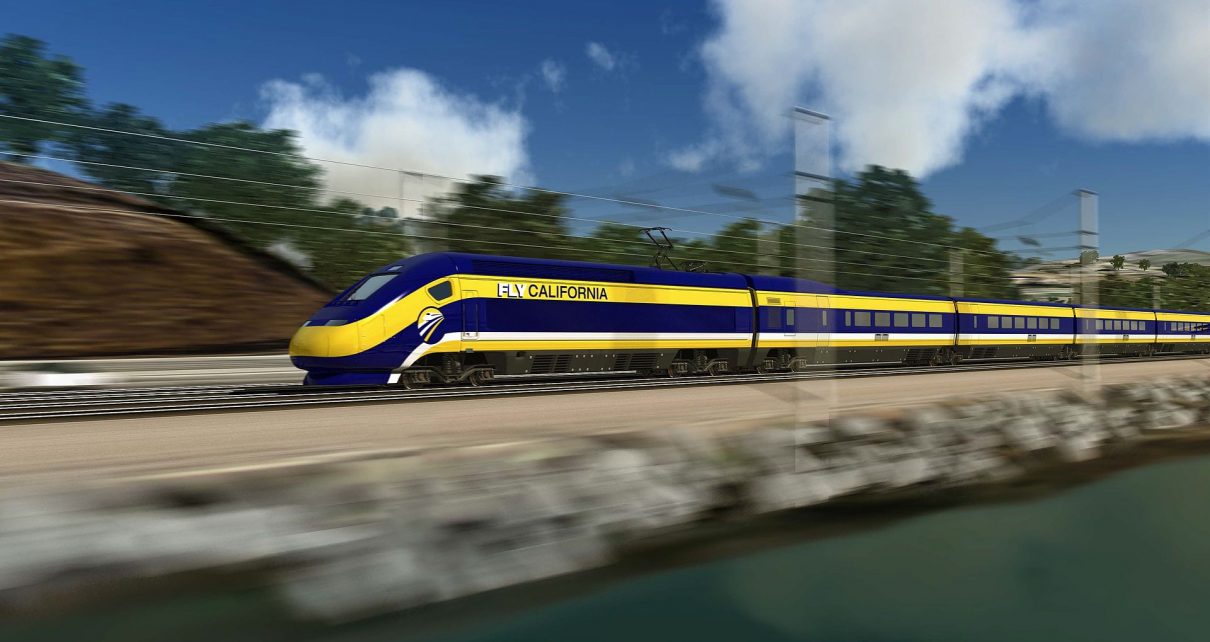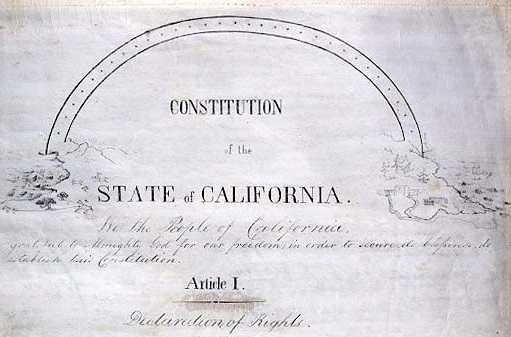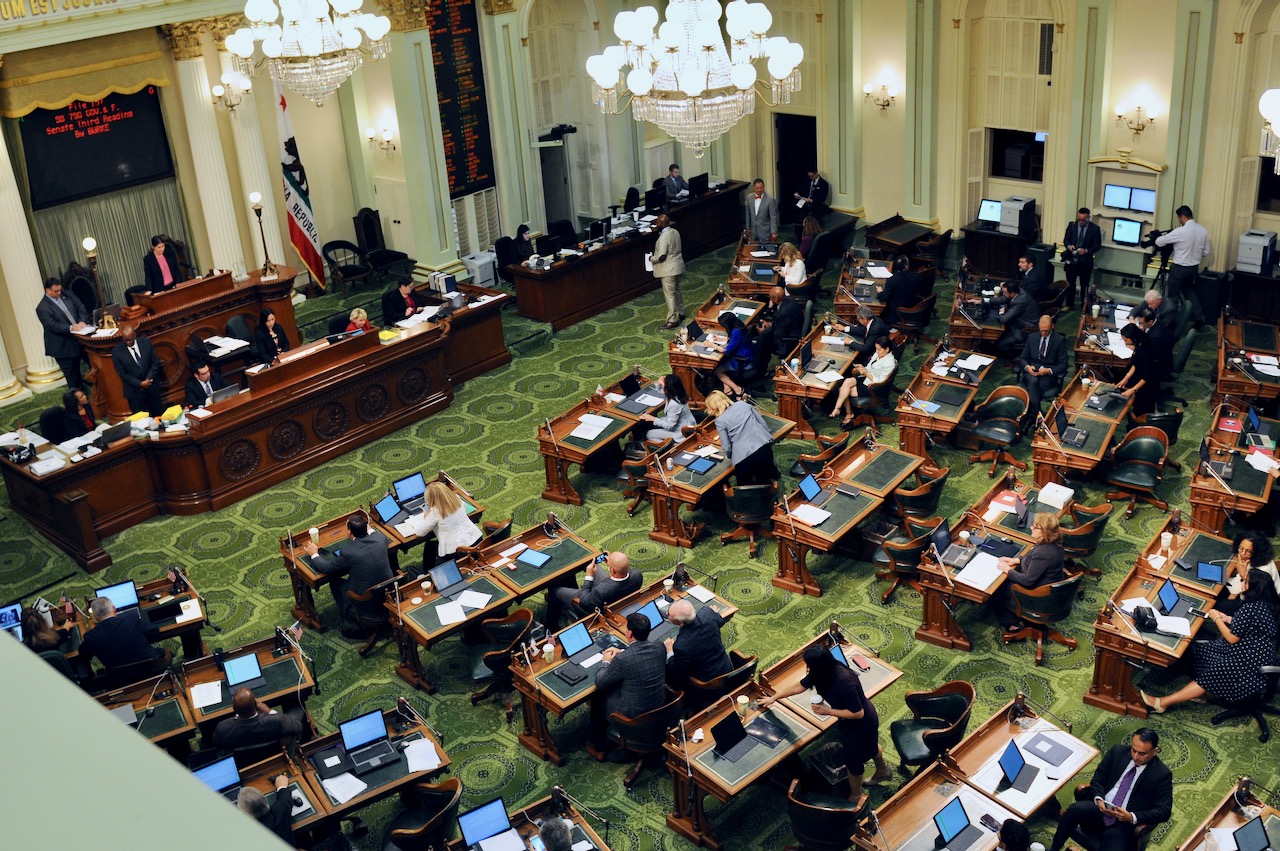
High Speed Rail train, artists rendering. (Photo: CHSRA.ca.gov)
Ringside: California’s Dubious Megaprojects
There are alternatives to these misguided megaprojects
By Edward Ring, March 14, 2024 2:39 am
 It would be inaccurate to suggest that California’s state Legislature can no longer think big. They can, and as such they are carrying on a tradition that two generations ago gave us the best universities in the world, expressways and freeways that helped catalyze a boom that lasted for decades, and the most remarkable system of water storage and transfers ever built, anywhere. Today, California still thinks big. We aim to lead by example, and show the world how to design an economy that has achieved “net zero” and still functions. To that end, four megaprojects are in the works or already underway; high speed rail, offshore wind, the Delta tunnel, and the new kid on the block, carbon capture and sequestration.
It would be inaccurate to suggest that California’s state Legislature can no longer think big. They can, and as such they are carrying on a tradition that two generations ago gave us the best universities in the world, expressways and freeways that helped catalyze a boom that lasted for decades, and the most remarkable system of water storage and transfers ever built, anywhere. Today, California still thinks big. We aim to lead by example, and show the world how to design an economy that has achieved “net zero” and still functions. To that end, four megaprojects are in the works or already underway; high speed rail, offshore wind, the Delta tunnel, and the new kid on the block, carbon capture and sequestration.
These projects, assuming they are all completed, will cost tens of billions, if not hundreds of billions. The money will come from taxpayers and ratepayers, baked into public budgets and utility pricing to pay down bonds issued to finance construction. Once they are operating, their earnings will not be enough to pay back their construction costs. They will be a permanent, massive drain on California’s economy.
For a briefing on California’s proposed offshore wind projects, refer to WC #14, published last October. That report is rich on quantitative details overlooked by most observers, and those details may perhaps excuse the title, where offshore wind is delicately referred to as a “catastrophic scam.” For information on the proposed “Delta Conveyance,” refer to WC #30, “The Opportunity Cost of the Delta Tunnel,” and WC #28, “Comparing the Delta Tunnel versus Desalination.” Both of those were published in early 2024, and as well are rich in quantitative details that ought to compel consideration of alternative ways to spend hundreds of billions of dollars — but this is California.
Which brings us to High Speed Rail. Of the fantastic four megaprojects under review in this analysis, it is the furthest along. Which isn’t saying much. California’s high speed rail project will go down in history as a financial, environmental, and social trainwreck, to use the appropriate metaphor. Here is an update.
High Speed Rail was originally sold to voters in 2008 as a marvelous antidote to automobile transportation. The train was supposed to travel at 220 miles per hour and get built at a total cost of $33.6 billion. The original 2008 “business plan” wisely refrained from estimating a completion date, and that’s about the only thing they got right. Some of the claims they made reveal eye-watering levels of delusion.
According to the initial plans, laying track from San Francisco to Los Angeles would “alleviate the need to build about 3,000 miles of new freeway plus five airport runways and 90 departure gates over the next two decades.” The entire project was envisioned to extend north to Sacramento and south all the way to San Diego. Fat chance.
Today, 16 long years later, the bullet train system is still just a scattered collection of gargantuan, fabulously expensive viaducts, slowly rising along an initial stretch that will connect San Joaquin Valley cities from Merced to Bakersfield. This “first phase” involves completing a mere 171 miles of what was planned to be 800 miles of high speed rail. To-date, even here where efforts have been focused, not one mile of track has been laid. The cost just for this initial segment is now projected to exceed $35 billion.
Do California’s math-challenged legislators realize that even in costly California, paying $204 million per mile of track is an insane waste of public money? Wait till they try to tunnel through Pacheco Pass to connect the Central Valley line to the San Francisco Bay Area, or try to punch through the San Gabriel Mountains to connect the system to Los Angeles. And imagine, if you will, how much it will cost to blast a corridor for high speed rail through the actual metropolis of greater Los Angeles, or through the dense suburbs that run uninterrupted from south San Jose all the way up into the heart of San Francisco.
With these constraints in mind, even at $204 million per mile, the whole 800 mile system will cost $163 billion. And if anyone thinks a track that costs $204 million per mile on some of the flattest farmland topography in America will “only” cost that much to tunnel through mountains and displace fully built out areas, well, run for the state legislature. You’ll be right at home.
The most recent plan for California’s high speed rail is to skip Sacramento and San Diego, and only extend the system from San Francisco to Los Angeles. The latest official estimated cost to do this is a paltry $128 billion, but every year that number goes up. In 2008 it was $33 billion. By 2012, already scaling back the projected speed via “blending” the “high-speed trainsets” with low speed commuter rail (where all the passengers would be), the total cost was increased to $68.4 billion. In 2018, the “middle range” cost estimate was increased to $77.3 billion.
What is in store for Californians at this point is a “high speed” system that now shall include slow commuter trains in the Bay Area and Los Angeles, at a cost of $128 billion. It will be a system that will never pay its operating costs, much less pay back its construction cost which is sure to increase even further. The kicker? The 171 mile first stretch of track is not even intended to operate with “carbon free” electric locomotives. To help cut costs, they’re intending to use old-fashioned diesel power out there.
There are alternatives to these misguided megaprojects. Instead of the tunnel, build infiltration beds in Delta channels to move massive amounts of winter water south without harming fish, and use the money that is saved to repair the levees and develop some protected new Delta habitat (and raise the limit on striped bass, if we’re serious about saving salmon). Instead of offshore wind, retrofit California’s existing fleet of natural gas power plants to incorporate the most advanced combined cycle designs, keep Diablo Canyon open, and explore additional nuclear energy options. Instead of high speed rail, pour that stupefying sum of money into upgrading and widening every freeway in the state, and upgrade existing conventional rail.
Coming soon, we will take a look at carbon capture and sequestration, another questionable megaproject moving quietly forward.
During their construction, megaprojects create thousands of well-paying jobs. But billions can be spent and jobs can be created while choosing megaprojects that will yield permanent economic dividends to everyone in California. That was understood by California’s political leadership in the 1950s and 1960s. Today’s politicians have to recover that crucial element if they care about the citizens they serve, much less the world that watches.
- Ringside: The Potential of Waste-to-Energy in California - April 17, 2024
- Ringside: How Much Water Will $30 Billion Buy? - April 10, 2024
- Ringside: Sacramento’s War on Water and Energy - April 4, 2024




The bigger the project the bigger the graft. Any actual results are purely accidental.
A study by U.C. Berkeley showed that the breakeven point for the CO2 emitted building the train versus people using the train instead of their cars or planes was “70 year if ever”.
To build the train, California had to go to court to nullify environmental laws.
The train is an environmental sham.
Consider that the train is being paid for with bonds. Take the cost of the train, whatever it ends up being, and multiply by 2. So take $128 billion and multiply by 2 to get $246 billion. Now divide that by the number of residents, 38,965,000, and you get $6300 every person in this state including children will have to pay for a train that goes from LA to SF. That’s insane. A family of four will need to fork over $25,000 for the train.
Why do people put up with this? Everything the Democrats touch turns to sh*t.
The criminal Democrat mafia uses megaprojects to enrich themselves and their cronies at the expense of taxpayers under the guise of environmentalism. It’s a racket.